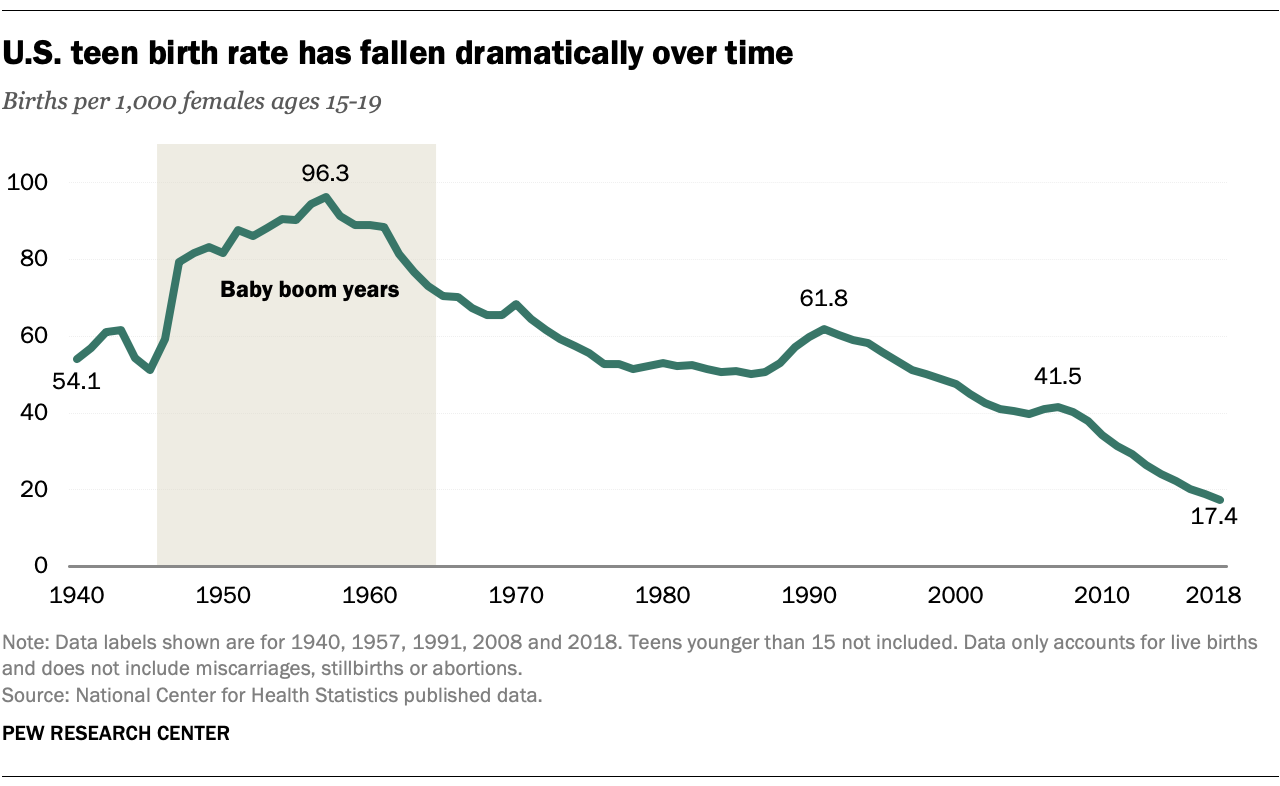
Teen Pregnancy Statistics: A Comprehensive Overview
Introduction
Teen pregnancy remains a significant public health concern, with far-reaching consequences for both young mothers and their children. Understanding the statistics surrounding teen pregnancy is crucial for developing effective prevention and intervention strategies. This comprehensive article delves into the latest data on teen pregnancy rates, demographics, and associated risk factors, providing a detailed analysis of the current landscape.
National Trends
According to the Centers for Disease Control and Prevention (CDC), the teen birth rate in the United States has declined significantly over the past several decades. In 2020, the birth rate among 15-19-year-olds was 17.4 per 1,000, a 74% decrease from its peak in 1991. However, despite this progress, the United States still has one of the highest teen birth rates among developed countries.
Demographic Disparities
Teen pregnancy rates vary significantly across demographic groups. Native American and Alaska Native youth have the highest rates, followed by Hispanic and African American youth. White youth have the lowest rates. Additionally, youth living in poverty, rural areas, and foster care are at increased risk for teen pregnancy.
Risk Factors
Numerous factors contribute to teen pregnancy, including:
- Lack of access to comprehensive sex education: Youth who receive comprehensive sex education are more likely to delay sexual activity and use contraception effectively.
- Peer pressure: Teenagers who have friends who are pregnant or have children are more likely to become pregnant themselves.
- Family instability: Youth from unstable family environments are more likely to engage in risky sexual behaviors.
- Mental health issues: Teenagers with depression, anxiety, or other mental health conditions are more likely to experience unplanned pregnancies.
- Substance abuse: Youth who use alcohol or drugs are more likely to engage in unprotected sex.
Consequences
Teen pregnancy has numerous negative consequences for both young mothers and their children:
- Health risks: Teen mothers are more likely to experience premature birth, low birth weight, and other pregnancy complications. Their children are also more likely to have health problems.
- Educational attainment: Teen mothers are less likely to complete high school and college, which limits their economic opportunities.
- Economic instability: Teen mothers are more likely to live in poverty and rely on public assistance.
- Social stigma: Teen mothers often face social stigma and discrimination, which can affect their mental health and well-being.
Prevention and Intervention Strategies
Addressing teen pregnancy requires a comprehensive approach that includes:
- Comprehensive sex education: Providing youth with accurate and age-appropriate information about sexual health is essential for preventing unplanned pregnancies.
- Access to contraception: Ensuring that youth have access to affordable and effective contraception is crucial for reducing teen birth rates.
- Youth development programs: Programs that provide youth with support, guidance, and opportunities for positive development can help reduce risk factors for teen pregnancy.
- Parent-child communication: Open and honest communication between parents and youth about sexual health can help prevent teen pregnancy.
- Community engagement: Involving community organizations, schools, and healthcare providers in teen pregnancy prevention efforts is essential for creating a supportive environment for youth.
Conclusion
Teen pregnancy remains a complex and multifaceted issue with significant consequences for young mothers and their children. Understanding the latest statistics on teen pregnancy rates, demographics, and risk factors is crucial for developing effective prevention and intervention strategies. By addressing the underlying causes of teen pregnancy and providing comprehensive support to youth, we can create a future where all young people have the opportunity to reach their full potential.